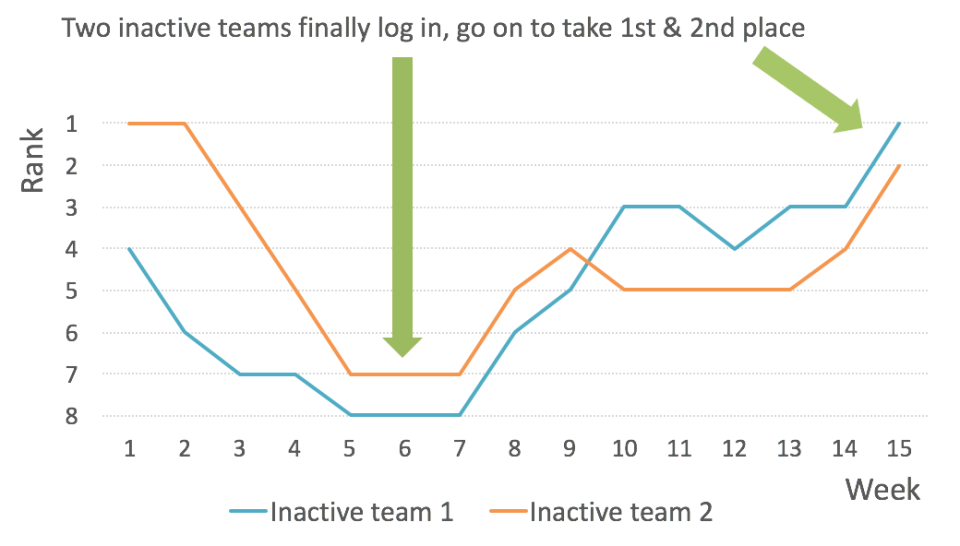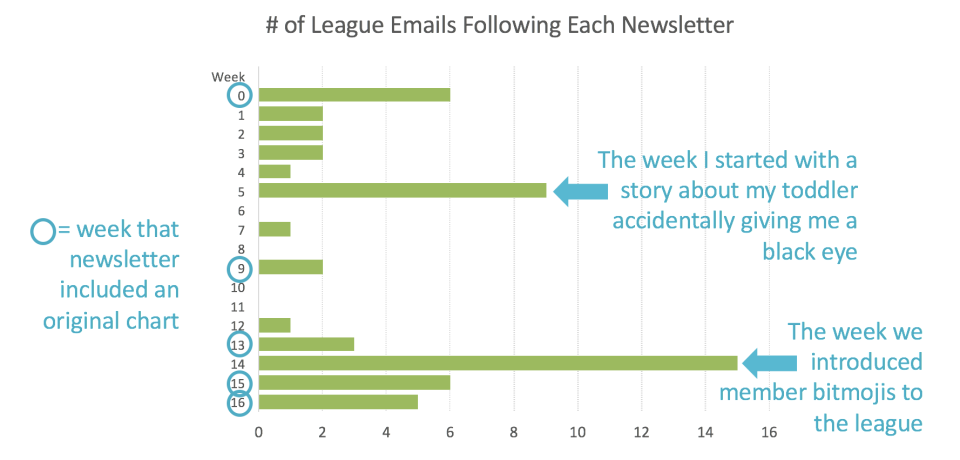I’m delighted to introduce Compound Return, an email newsletter with tips and resources for marketing successfully in the financial world. Want to be on the mailing list? You can subscribe here.

This was a big year for me.
This year, I was the Commissioner of a new fantasy football league.
Have you ever played in a league? You draft a virtual squad, mixing and matching players from different NFL teams. Each week, your squad faces off against another virtual squad in your league. Your players earn points based on their performance in a real-life NFL game.
You find yourself emotionally invested in people you’ve never heard of, like the kicker from Green Bay whose right foot will make or break your week.
Watching games over the season, it struck me how each player is building on thousands of unseen hours of practice, wins, losses, injuries, milestones. How cumulative their particular success is.
There’s another dimension to this kind of success: for those who advance through the cumulative challenges, the payoff is huge. That’s another thing about cumulative undertakings: they’re also, often, non-linear. The gains shoot upward quickly.
And this is the nature of compound returns, the magic behind growing wealth over the long term. As time goes on, investment gains are amplified, because each period builds on the success of prior periods.
The same principle is at work in marketing, and especially in content marketing. Readers need to hear from you again and again before they trust your insights and in turn, your brand. But earning trust has a huge payoff. Cumulative, non-linear. That’s why I’ve named this publication Compound Return. Thanks so much for reading!
Content marketing: Marketing to clients and prospects by offering them valuable information, in any format, to earn trust and build a relationship.
As for that fantasy football league, I learned a surprising amount from my days as Commissioner. Technically, the Commissioner’s job is to set the rules for the league, and that’s about it. But I had bigger dreams. I wanted to help league members – old college friends with crammed schedules and young children – find a way to hang out again, if only in the virtual world. So I treated the fantasy football league as a content marketing challenge. For 17 weeks, I published a weekly newsletter to members, which led to some pretty big results.
Here are three content marketing insights I learned firsthand from this little challenge:
1. Keep plugging with content, and the results will come
In the fantasy football league, I had a singular goal: I wanted participation.
Yet, two of our league members weren’t even logging in. Their inactive squads lost most of their matchups, and they both sank to the bottom of the ranks. The league seemed like a bit of a bust.
So in weekly newsletters, I mentioned their names. I cajoled them and encouraged them. I sent screenshots of the rankings, and links to fantasy football tools.
And lo and behold, in week 6, they logged in.
Those two teams went on to win 1st and 2nd place in the league.
2. People love stories and charts
Another metric I tracked as Chief Content Officer was how much email back-and-forth came from each newsletter.
Most weeks, the newsletter focused on NFL players and team scores. Email chatter was minimal.
 But sometimes, I would throw in a personal story or original data analysis of trends in the league. Sure enough, email conversations spiked on those weeks. People love stories and charts.
But sometimes, I would throw in a personal story or original data analysis of trends in the league. Sure enough, email conversations spiked on those weeks. People love stories and charts.
3. Tone is an art, not a science
It takes a while to find the right tone for content. The right topics, the right format, the right voice. There’s no way around it; you just have to try different things and see what feels authentic and true to your zone of authority. In the early weeks, I never knew how I would start the newsletter. But as the season went on, I found my footing, and the newsletter improved.
Content marketing works. It’s an imperfect process, and a long one, but sharing information and insights really does engage audiences, earn trust and build brands. That’s what makes it such an ideal tool for financial service firms. And for those who persevere, the payoffs are substantial.
Carolyn is a freelance financial writer with 15+ years of experience in financial services. She holds an MBA from the University of Chicago Booth School of Business and is a CFA charterholder. She writes from Washington D.C.
Posted By
Carolyn
Categories
Compound Return Newsletter, Content Marketing, Newsletters